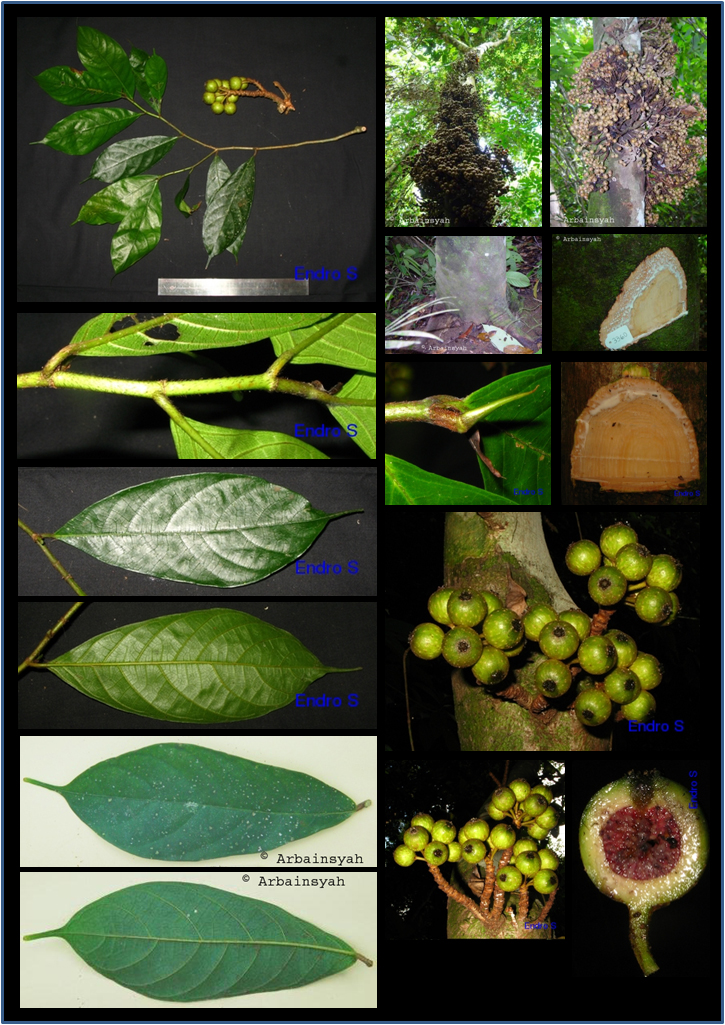Ficus schwarzii Koord., Minah. (1898)
Named after J.A.T. Schwarz [1836-?], Indonesian priest-botanist.Synonyms
Ficus miquelii King
Diagnostics
Understorey tree up to 17 m tall and 29 cm dbh. Stem with white sap.
Stipules ca. 10 mm long, glabrous to hairy. Leaves alternate, simple, penni-veined,
glabrous to hairy. Fruits ca. 17 mm diameter, golden-brown, globose figs placed
in dense clusters along the stem.
Description
Dioecious tree, up to 20 m tall, 20 cm diameter. Bark dark grey, smooth. Twigs 0.15-
0.25 cm thick, grey-brown, young ones angled. Stipules lanceolate, up to 1.5 cm long,
caducous. Leaves distichous, membranous, glabrous; elliptic to oblanceoate, 8-20 x 2.5-
6.5 cm, base cuneate, symmetric, margin entire, plane, apex caudate, acumen up to 2.5
cm long; midrib flat above; lateral veins 5-9 pairs, well-spaced, curved, raised below,
faint above, basal pair short, inconspicuous, without axillary glands; intercostal venation
scalariform to reticulate, visible on both surfaces; petiole 0.5-1 cm long. Syconia borne
in massive clusters on branched leafless twigs arising from the stem, pear-shaped, 2.5-
3.75 cm diameter, ripening reddish brown, apex depressed with projecting scales; peduncle
1-3 cm long; basal bracts 3, 1-3 mm long; internal bristles absent or very few. Tepals
united, tubular or collar-like. Achenes c. 1 mm long, keeled, faintly tuberculate. [from
Tree Flora of Sabah and Sarawak]
Ecology
In slightly disturbed (open) to undisturbed mixed dipterocarp and sub-montane
forests up to 1900 m altitude. Along rivers and streams and on hillsides. On
sandy to clay soils, also on limestone.
Uses
The latex is used against ringworm (latex on affected parts). Fruits are edible.
Distribution
Burma, Thailand, Peninsular Malaysia, Sumatra, Borneo, Sulawesi.
Local names
Borneo: Ara, Engkururoh, Kahat ucang, Kara, peranak (Dusun), engkunoh (Iban), pipin (Bidayuh).
